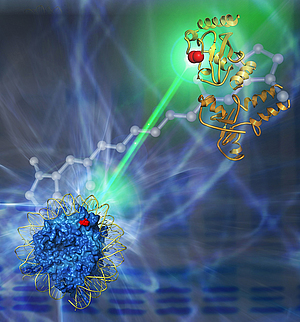Group Koehler
Alwin Köhler
Max F. Perutz Laboratories, Dr. Bohr-Gasse 9, 1030 Vienna
Phone: +43 (0)1 4277-61685, Email: alwin.koehler(at)mfpl.ac.at
Web: https://www.mfpl.ac.at/de/gruppen/mfpl-gruppen/group-info/koehler-alwin.html
Ubiquitin Signaling and Cellular Proteostasis
I have a longstanding fascination for the ubiquitin system. My early studies on the 26S proteasome were focused on how cells degrade defective proteins to keep their proteome healthy. This led me to later investigate the enzymology and structure of histone deubiquitinases, studies which fueled my interest in the histone E3 ligase machinery. Currently, the main focus of my lab lies in studying the regulation of gene expression by ubiquitin. And we have begun to address the question of how cells keep their proteome intact under extreme conditions by using an obscure animal.
Key Publications
* Gallego LD, Ghodgaonkar Steger M, Polyansky AA, Schubert T, Zagrovic B, Zheng N, Clausen T, Herzog F & Köhler A (2016). Structural mechanism for the recognition and ubiquitination of a single nucleosome residue by Rad6/Bre1. Proc Natl Acad Sci U S A, Sep 6. pii: 201606863.
* Schneider M, Hellerschmied D, Schubert T, Amlacher S, Vinayachandran V, Reja R, Pugh BF, Clausen T & Köhler A (2015). The nuclear pore-associated TREX-2 complex employs Mediator to regulate gene expression. Cell, 162(5):1016-28.
* Köhler A*, Zimmerman E, Schneider M, Hurt E, & Zheng N* (2010). Structural basis for assembly and activation of the hetero-tetrameric SAGA histone H2B deubiquitinase module. Cell, 14, 141(4):606-17.
Projects within VBC Ubiquitin Club

1) Ubiquitination of histone H2B is a key regulator of gene expression, yet, it is still poorly understood how this modification is established by the E3 ligase Bre1 (human RNF20/40). Our goal is to reveal the mechanisms of Bre1 regulation using biochemical reconstitution, enzymological assays, X-linking mass spectrometry and various structural approaches. We will characterize key interactions with components of the transcription machinery and dissect their effects on Bre1 activity. The goal is to understand how chromatin ubiquitinatin and transcription are mechanistically coupled.
2) Tardigrades (also known as water bears or moss piglets) are one of the most resilient and fascinating animals known: they withstand conditions that would fatal to nearly all other life forms on earth. This includes temperatures from close to absolute zero to about 150°C, pressures six times greater than those found in the deepest ocean trenches, ionizing radiation at doses lethal for a human, and even the vacuum of outer space. We are interested in how Tardigrades maintain cellular proteostasis during extreme conditions. Our aim is to unravel the molecular mechanisms behind their outstanding robustness to gain general insights into protein quality control.

